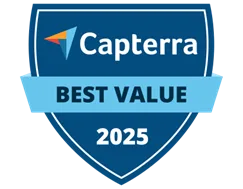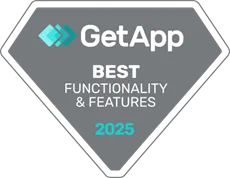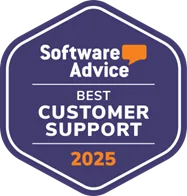Every good marketer knows data is the key to modern marketing success. Data empowers you to understand exactly who your target audience is and how to reach them. So, you can share content that resonates with them and increase engagement with your organization.
While many organizations take a data-driven approach to their marketing campaigns, you can also leverage constituent data to effectively promote events. In this article, we’ll review what a data append is and how the third-party data it provides you with can upgrade your event marketing strategy.
That way, you can personalize your efforts to your attendees, driving a higher return on investment (ROI) for your organization and a higher return on experience (ROE) for your audience.
What is a data append?
When you conduct a data append, you supplement your database with third-party data. Combining this additional information with your existing first-party data allows you to get a fuller picture of your attendees and target them more effectively.
Working with a data provider enables you to append data such as:
- Demographics
- Contact information
- Education
- Income
- Net worth
- Home ownership and property data
- Marital status
- Presence of children in the home
- Lifestyle information
Aside from supplementing your existing data, Deep Sync explains that appending data is also part of the data hygiene process, which ensures your database is accurate, up-to-date, and complete. With a clean database filled with updated information, you can better personalize your event marketing content to address your attendees’ demographics, interests, and preferences.
Here are a few ways you can get started with elevating your event marketing with data:
1. Enhance your attendee profiles.
After conducting your data append, start by fleshing out your attendee profiles. While attendees may provide basic information during registration, appending additional data allows you to learn more about them and update your records accordingly.
It’s best practice to audit your database before your data append so you can determine what data you’re missing and prioritize obtaining that information. For instance, you may only collect email addresses during registration but decide you want to experiment with a text marketing campaign.
In this case, you could append phone numbers and incorporate them into your attendee profiles. Then, you can reach out to gauge their interest in receiving text messages from your organization. If they opt in, send them quick updates about your event or sneak peeks that will grab their attention.
2. Segment your audience.
Once you’ve fleshed out your attendee profiles, segment your audience into relevant groups to personalize your event communications. When you send targeted event invitations and promotional messages that resonate with each segment, you’ll generate excitement for your event and increase engagement.
For example, a corporation running a B2B event may append firmographic information to learn more about each company attending its event. Then, they may group companies by industry and send them information about industry-specific networking opportunities and speaker sessions they can look forward to during the event.
Another common way to segment your audience is by location. Let’s say you’re an association with members across the United States hosting an annual event in Houston, Texas. Since some people will need to travel to attend this event, you can use the geographic information you’ve appended to determine which attendees are from out-of-state and send them accommodation recommendations near your venue.
3. Tailor your event.
Beyond customizing your communications, don’t forget to incorporate your attendees’ interests and preferences into the event itself. When you find out more about attendees through a data append, you can tailor your event schedule and activities to them.
For instance, let’s say you’re a finance firm running its annual conference. One of your main workshop sessions will focus on how the business enables its clients to participate in philanthropy through its new product suite.
Using the lifestyle information you appended, you discover that many of your employees in attendance personally contribute to natural disaster relief organizations. Including examples of these organizations in your philanthropy workshop will appeal to your audience’s interests and hold their attention. Additionally, this information may inspire your firm to prioritize these causes in its own corporate giving endeavors to better resonate with employees.
Additionally, leverage the segments you’ve created to create unique opportunities at your event for certain groups. Let’s say you’re a nursing association running a networking event. Through a data append, you may find that a large portion of your members went to the same school. After creating a segment for these attendees in your database, set up a table or section of your venue specifically for alumni of this institution to meet and form connections.
4. Follow up with attendees.
As Double the Donation explains, events are all about building connections with your audience. When you provide attendees with an enjoyable experience catered to their interests and preferences, you form lasting relationships that drive revenue and growth for your organization.
Don’t let those relationships start and end with your event, though! Use the contact information you’ve gathered to follow up with attendees, thank them for showing up, and send them additional engagement opportunities by:
- Directing them to your website to learn more about your organization
- Asking them to follow your social media pages
- Encouraging them to opt into your newsletter
- Informing them of future events
Just as you did with your pre-event communications, personalize your post-event messaging to each individual. For example, if an attendee has a history of volunteer work, send them the sign-up form to volunteer at your next event. Alternatively, if an attendee donated at your event, be sure to reference their generosity and thank them for their contribution.
With these data-driven marketing tips, you can better reach and engage your attendees before, during, and after your event. Offering them personalized experiences increases the chances that they’ll attend again in the future, allowing you to build lasting relationships with attendees and ensuring your continued success.
Guest Author: Gabrielle Perham, Deep Sync



